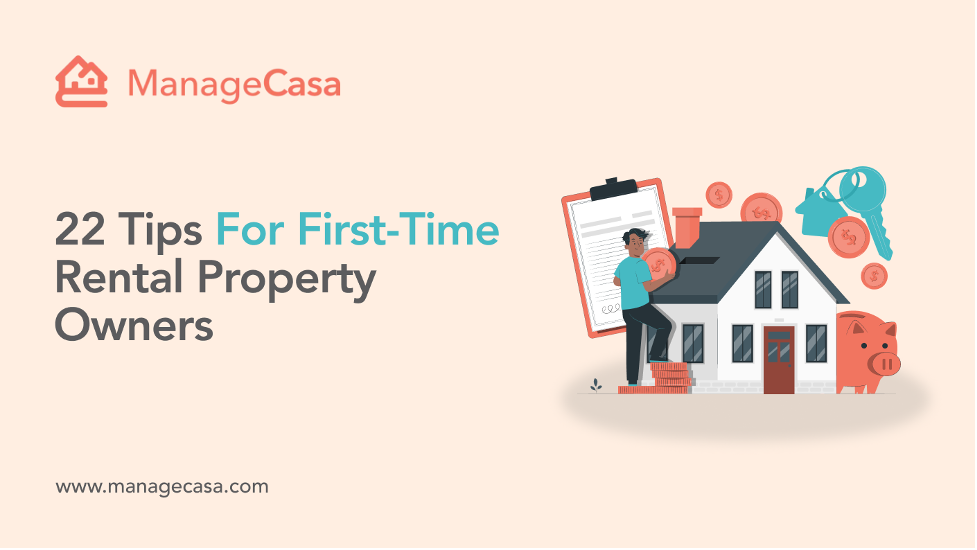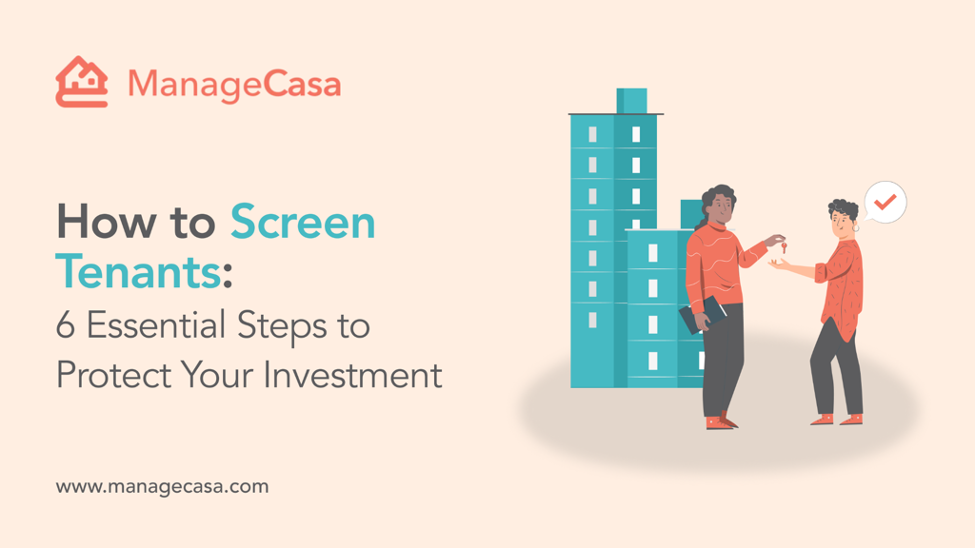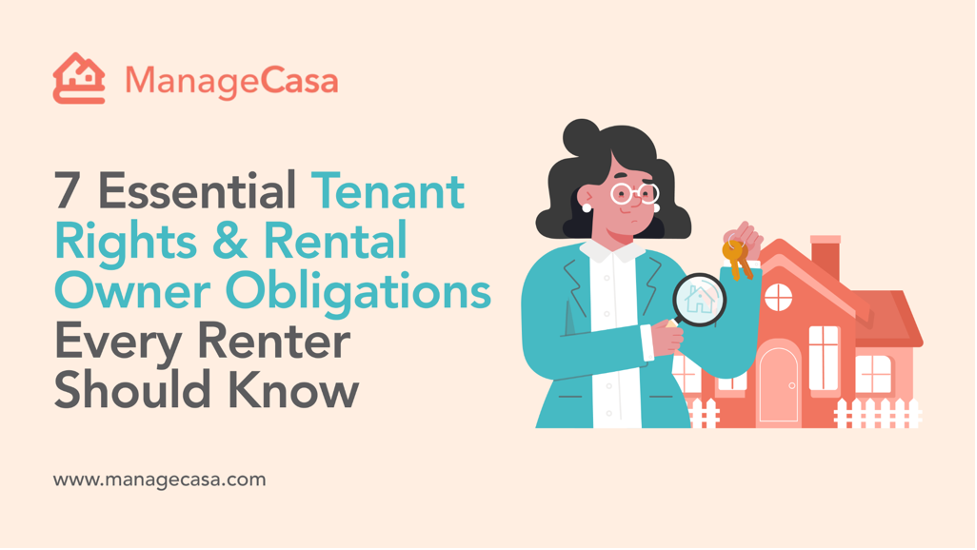Rental Agreements and Lease Terms: A Comprehensive Guide
Is your rental agreement about to expire? Or are you drafting a new lease for your rental property? Whether you’re a landlord managing multiple units or a tenant navigating the rental process for the first time, understanding rental agreements and lease terms is essential for a smooth and stress-free tenancy.
However, with legal details, clauses, and compliance requirements to consider, it’s easy to overlook critical elements. That’s where ManageCasa comes in offering seamless solutions to help landlords and tenants manage rental agreements efficiently and confidently.
Why Rental Agreements & Lease Terms Matter
A well-written rental or lease agreement defines the relationship between landlords and tenants, outlines responsibilities, and sets the legal framework for tenancy. These documents:
-
Reduce misunderstandings
-
Prevent legal issues
-
Protect both parties
-
Clarify expectations and obligations
Understanding the difference between short-term rental contracts, long-term lease agreements, and state specific requirements ensures compliance and reduces risk.
In this guide, we’ll explore rental agreements, lease terms, legal considerations, and the essential clauses every contract should include. Let’s dive in.
Lease vs. Rental Agreement: What’s the Difference?
Many people use “rental agreement” and “lease agreement” interchangeably, but they serve distinct purposes.
Rental Agreement
-
Month-to-month
-
Flexible
-
Can be ended with proper notice (usually 30 days)
Lease Agreement
-
Fixed-term (6 or 12 months, or longer)
-
Stable rental payments
-
Stronger long-term commitment
Which one is better?
-
Choose a lease agreement for stability.
-
Choose a rental agreement for flexibility and short-term occupancy.
Types of Rental Agreements
The primary types of rental contracts in the United States include:
1. Month-to-Month Rental Agreement
-
Automatically renews each month
-
Highly flexible
-
Ideal for tenants needing temporary housing
2. Fixed-Term Lease Agreement
-
Lasts 6–12 months or more
-
Provides stable rental income
-
Rent remains fixed during the term
3. Sublease Agreement
-
Allows a tenant to rent the property to someone else
-
Requires landlord approval
-
Original tenant remains responsible
4. Rent-to-Own Agreement
-
Tenant rents the home with an option to purchase
-
Includes an option fee and pre-set purchase terms
-
Ideal for tenants preparing for homeownership
Each option comes with unique legal implications. Both tenants and landlords must understand their responsibilities and comply with local and state housing laws.
Short-Term Rental Contracts vs. Long-Term Lease Agreements
Tenants and landlords often choose between short-term flexibility and long-term stability.
Short-Term Rental Contracts
Common for:
-
Airbnb & vacation rentals
-
Corporate housing
-
Temporary relocations
Pros
-
Flexible pricing
-
Higher earning potential
-
Often furnished and utility-included
Considerations
-
Local restrictions (many cities regulate short-term rentals)
-
Seasonal income fluctuations
-
Higher turnover and cleaning costs
Long-Term Lease Agreements
Common for:
-
Residential rentals
-
Commercial leases
Pros
-
Stable, predictable income
-
Fewer vacancies
-
Lower turnover costs
-
Greater security for tenants
Considerations
-
Less flexibility for rent adjustments
-
More legal protections for tenants
-
Penalties for early termination
Moreover, regardless of which option is chosen, it is essential to understand the legal obligations involved in managing rental properties. Property management is not just about drafting agreements it also includes adhering to state regulations and licensing requirements. For instance, in some states, like Alaska, property management requires a specific license to operate legally. Let’s examine these requirements more closely.
Licensing Requirements for Property Management in Alaska
In some states, property management requires a license.
Alaska is one of the strictest examples.
To legally manage property in Alaska, individuals must hold a real estate salesperson license, which requires:
-
Age 19+
-
40 hours of pre-licensing education
-
Passing the state exam
-
No fraud-related indictments
-
Application submitted within six months of passing
Failure to comply with these licensing requirements can result in legal penalties and fines. Property managers must meet Alaska’s real estate licensing requirements before offering services. Compliance isn’t just about obtaining the proper license, it also involves staying current with evolving regulations and ensuring appropriate management practices.
While Alaska has strict real estate licensing requirements, other states may have different requirements that landlords and property managers must navigate, especially when operating in multiple locations. This is where property management software like ManageCasa becomes crucial. Beyond simplifying operations, it helps ensure compliance with licensing requirements , tenant rights , and financial tracking, reducing the risk of legal violations.
Importance of Property Management Software in Alaska
In Alaska, property management companies are legally required to hold a valid real estate license to engage in activities such as renting out properties, listing them for rent, or collecting rent on behalf of property owners. Non-compliance with these licensing requirements can result in legal penalties and fines. To navigate these regulations effectively and improve operational efficiency, many property managers in Alaska are turning to property management services software.
How Property Management Softwares May Streamline Real Estate Operations in Alaska

- Automated Compliance: Property management software helps ensure that all activities comply with Alaska’s specific licensing requirements . For instance, it can automatically generate lease agreements that comply with state regulations, reducing the risk of legal liability. The software safeguards against potential violations by maintaining up-to-date records and facilitating adherence to legal requirements.
- Efficient Record-Keeping: Maintaining accurate records is crucial for compliance and operational efficiency. Property management software centralizes data related to tenant payments, lease agreements, and legal notices, making it easier to access and manage essential information. This centralized system ensures that all records are organized and readily available for audits or legal reviews.
- Seamless Rent Collection: Automated rent collection features streamline the payment process, reducing the likelihood of errors and ensuring timely deposits. The software can send tenant reminders, track payments, and automatically apply late fees when necessary. This improves cash flow and ensures rent collection practices comply with state regulations.
- Legal Protection: Property management software minimizes the risk of legal disputes by standardizing processes and documentation. It ensures that all lease agreements and tenant interactions are documented and comply with Alaska’s legal guidelines, providing a clear audit trail in case of disputes. This level of documentation is crucial for protecting property managers from potential legal challenges.
- Maintenance Tracking: Efficiently managing maintenance requests is vital for tenant satisfaction and property upkeep. Property management software allows for the scheduling and tracking of maintenance tasks, ensuring that issues are addressed promptly and in compliance with safety regulations. This proactive approach helps maintain the property’s value and ensures adherence to state-mandated habitability standards.
Property management software could be invaluable for property managers in Alaska. It offers solutions that ensure compliance with state laws, streamline operations, and provide legal protection. By adopting such technology, property managers can focus more on strategic tasks and be confident that their administrative processes are handled efficiently and by legal requirements.
Want to compare the best platforms before choosing one? Explore our Rentals Buyer’s Guide, your step-by-step resource for evaluating features, pricing, and benefits of today’s top rental management software.
6 Common Lease Terms and Clauses You Should Include
A strong lease agreement protects both parties. Make sure yours includes:
1. Rent Increase Clause
Explains:
-
How rent may increase
-
When increases apply
-
Required notice (usually 30–60 days)
2. Subletting Policy
Should clarify:
-
Whether subletting is allowed
-
Screening requirements for subtenants
-
Tenant liability
3. Right of Entry (Landlord Access to Property)
Landlords must provide reasonable notice before entering a rental unit for inspections and repairs. .
- Notice Requirement
- Standard notice is 24-48 hours before entry (varies by state).
- Entry without notice is only allowed in emergencies (e.g., fire, flood ).
- Reasons for Entry
- Conducting repairs or maintenance.
- Showing the property to prospective tenants.
- Inspecting for lease violations.
- Tenant Rights: Tenants can refuse entry without proper notice, except for emergencies.
4. Early Termination Clause
This clause specifies the conditions for a tenant to break a lease before its end date.
- Acceptable Reasons for Early Termination
- Job relocation (with proof of job offer )
- Military deployment (protected under the Service members Civil Relief Act)
- Habitability issues (if the property becomes unlivable due to negligence by the landlord)
- Penalties for Breaking the Lease
- Requiring tenants to pay rent for the rest of the lease agreement .
- Forfeiting the security deposit (if local or state laws allow)
5. Lease Renewal Options
Leases often include renewal options for both landlords and tenants. This clause sets expectations for how the lease can be renewed or modified.
- Auto-Renewal: Some leases automatically renew unless either party provides a written termination notice (e.g., 30 or 60 days before lease expiration).
- Negotiation Terms: Tenants may request modifications to lease terms (e.g., rental rate, pet policy) before renewal.
- Notice Period for Renewal: The lease should state how far in advance tenants must notify the landlord of their intent to renew or vacate.
6. HOA (Homeowners’ Association) Rules
If the rental unit is part of an HOA, tenants must follow additional community rules. The lease should include a section outlining these regulations.
Common HOA Rules
- Noise restrictions and quiet hours.
- Parking rules (assigned spaces, guest parking limitations).
- Landscaping and exterior maintenance requirements.
- Restrictions on holiday decorations and exterior modifications.
Tenant Responsibility: The lease should clarify that violations of HOA rules may result in fines and potential eviction.
Build Stronger Rental Relationships
Clear, respectful communication is essential. Good landlord-tenant relationships reduce disputes and improve long-term tenancy.
Want tips? Read our guide:
10 Communication Tips for Tenants and Landlords
Simplify Rental Management with ManageCasa: A Smarter Way to Handle Lease Agreements

Managing multiple rental properties requires more than just drafting a lease.
It requires streamlined systems for:
-
Applications
-
Rent collection
-
Accounting
-
Compliance
ManageCasa helps you handle everything in one platform—saving time, reducing stress, and improving tenant satisfaction.
Why Thousands of Landlords Choose ManageCasa
-
Tenant Screening Powered by TransUnion & Stripe
-
Online Rent Collection (ACH, card, Apple Pay)
-
Custom Lease & Application Management
-
Maintenance Tracking & Vendor Coordination
-
Smart Accounting Tools
-
Works for All Property Types
Experience Stress-Free Rental Management
Ready to simplify rental operations?
Take the stress out of rental management—Schedule a FREE DEMO today! 🚀
Frequently Asked Questions


